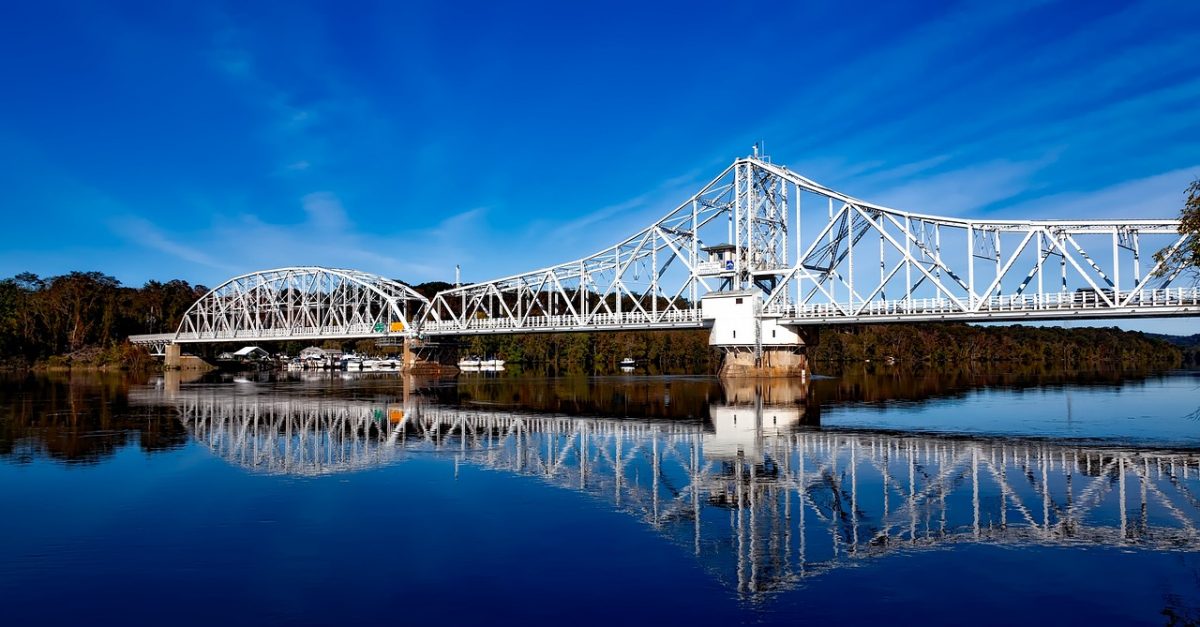What states allow off the grid living – What states allow off-grid living? The dream of self-sufficiency, escaping the urban grid, and embracing a simpler life attracts many. But the reality involves navigating complex legal landscapes, securing resources, and understanding the environmental implications. This exploration delves into the states that offer the most permissive environments for off-grid living, examining the legal hurdles, practical considerations, and community aspects of this increasingly popular lifestyle choice.
From securing land and navigating permitting processes to sourcing water and electricity, the challenges and rewards of off-grid living are significant. This report investigates the specific regulations and practicalities in various states, offering insights into the realities of building and maintaining a sustainable off-grid existence. We’ll analyze the pros and cons, explore different approaches to resource management, and examine the social and environmental impact of this unique lifestyle.
Legal Aspects of Off-Grid Living: What States Allow Off The Grid Living
Navigating the legal landscape of off-grid living requires careful consideration of various state and local regulations. While the allure of self-sufficiency is strong, prospective off-gridders must understand the legal requirements governing land ownership, water access, and construction. Failure to comply can lead to significant fines and legal challenges.
State Laws and Regulations Pertaining to Off-Grid Living
State laws regarding off-grid living vary significantly. Key areas of concern include water rights, which often dictate how much water can be drawn from natural sources; land ownership, which determines the extent of permissible activities on the property; and building permits, necessary for the construction of any structures, even rudimentary ones. Some states have more established frameworks for managing off-grid development than others, while others may lack specific regulations, leaving interpretation to local authorities.
This can lead to inconsistencies and potential difficulties for those seeking to establish off-grid lifestyles.
Comparative Analysis of Legal Frameworks in Five States
Five states frequently cited as having more permissive off-grid living policies are Alaska, Montana, New Mexico, Wyoming, and Idaho. However, even within these states, significant variations exist at the county and local levels. Alaska, for instance, boasts vast tracts of public land, offering more opportunities for off-grid living, but navigating land access and permitting processes can be complex.
Montana, known for its rural character, generally allows for more freedom in land use, but water rights can be a significant hurdle. New Mexico’s diverse geography leads to varying regulations across counties. Wyoming’s emphasis on land conservation can create challenges for off-grid development, while Idaho’s regulations vary widely depending on location and specific activities. Direct comparison requires a thorough understanding of the specific regulations in each county within these states.
Permitting Processes for Off-Grid Construction in Three States
The process of obtaining necessary permits and licenses for off-grid construction varies widely. In Montana, for example, obtaining a building permit typically involves submitting detailed plans to the county, demonstrating compliance with building codes (which might be minimal in rural areas), and paying associated fees. The process in New Mexico may involve multiple layers of permitting from county, state, and potentially even federal agencies, depending on the location and the type of construction.
In Alaska, the permitting process can be particularly complex, varying depending on whether the land is privately owned or public land managed by the state or federal government. Applicants should expect significant lead times and potentially extensive documentation requirements.
State Regulations on Septic Systems and Wastewater Disposal
Wastewater disposal is a critical concern for off-grid living. Regulations vary considerably across states.
In this topic, you find that off grid living series is very useful.
| State | Septic System Requirements | Wastewater Disposal Regulations | Permitting Process |
|---|---|---|---|
| Alaska | Varies by region and borough; often requires state-approved systems. | Strict regulations on greywater and blackwater disposal; often require engineered systems. | Generally involves application to the local environmental health authority. |
| Montana | Generally follows national standards; may have county-specific regulations. | Regulations on wastewater discharge to protect water quality; may require onsite treatment systems. | Typically handled at the county level; requires submission of plans and inspections. |
| New Mexico | Regulations vary significantly by county; some counties have stricter requirements than others. | Strict regulations to protect groundwater resources; often requires state-approved systems. | May involve multiple permitting agencies; often requires detailed plans and environmental assessments. |
| Wyoming | Similar to Montana, often following national standards with local variations. | Stringent regulations to protect water resources; often mandates advanced treatment systems. | Usually handled at the county level, with requirements varying by location. |
Land Acquisition and Property Considerations
Securing suitable land is paramount for successful off-grid living. The process involves careful consideration of various factors, from geographical suitability to legal compliance. Finding the right property requires research, planning, and a realistic understanding of the challenges and rewards involved.
The suitability of land for off-grid living hinges on several interconnected factors. Climate plays a crucial role, influencing water availability, energy production (solar, wind), and the feasibility of growing food. Terrain dictates accessibility, construction challenges, and the potential for natural hazards. Proximity to resources such as water sources (wells, springs), timber, and potentially even existing infrastructure (roads for limited access) is essential for minimizing the logistical complexities of off-grid life.
States like Montana, with its vast open spaces and varied terrain, offer diverse options. Conversely, states like New Mexico, known for its arid climate and unique geological features, present different sets of challenges and opportunities.
Suitable Land Examples in Different States
Montana offers expansive tracts of land suitable for off-grid living, particularly in its less populated eastern regions. These areas often feature rolling hills, access to groundwater, and ample space for self-sufficiency projects. However, harsh winters necessitate careful consideration of energy efficiency and building materials. In contrast, parts of New Mexico, while drier, offer unique opportunities. Properties with access to natural springs or the potential for solar power generation can be highly attractive.
The high desert terrain presents challenges, but the unique environment is appealing to those seeking a more isolated existence. Finally, areas of Texas, particularly the Hill Country, offer a blend of varied terrain, access to resources, and a more moderate climate.
Factors to Consider When Purchasing Land for Off-Grid Living
Purchasing land for off-grid living necessitates a thorough due diligence process. Zoning regulations vary widely by state and county, dictating what activities are permissible on the property (building restrictions, well drilling permits, etc.). Environmental impact assessments are often required, especially in sensitive ecosystems. Soil quality is crucial for water management and agriculture. Access to utilities (even if only limited access) should be investigated, as completely self-sufficient living is extremely challenging.
Legal issues surrounding property lines and easements are vital to understand before committing to a purchase. Furthermore, the distance to emergency services and the availability of healthcare should be factored into the decision.
Checklist for Prospective Off-Grid Landowners
A comprehensive checklist can help streamline the land acquisition process. It should include:
- Define your needs and priorities (climate, terrain, resources).
- Research suitable states and counties, considering zoning regulations and environmental restrictions.
- Identify potential properties and conduct thorough site visits.
- Engage a real estate professional experienced in rural land sales.
- Conduct due diligence: title search, survey, soil testing, well water testing.
- Obtain necessary permits and licenses (building, well drilling).
- Secure financing, if needed.
- Complete the purchase and secure property insurance.
Average Land Prices in Three States
Land prices vary significantly depending on location, size, and features. The following table provides a general overview of average land prices in three states known for their suitability for off-grid living. Note that these are estimates and can fluctuate greatly.
| State | Average Price per Acre (USD) | Factors Influencing Price | Notes |
|---|---|---|---|
| Montana | $2,000 – $10,000 | Location, access to utilities, terrain, water rights | Prices can be significantly higher near towns or with improved access. |
| New Mexico | $1,000 – $5,000 | Water availability, proximity to towns, views | Prices are often lower in more remote areas but access to water is critical. |
| Texas (Hill Country) | $3,000 – $15,000 | Terrain, views, proximity to amenities | Prices can vary widely depending on location and acreage. |
Environmental Considerations and Sustainability

Off-grid living, while offering a compelling alternative lifestyle, necessitates careful consideration of its environmental impact. The choices made regarding energy production, waste management, and construction significantly influence the overall sustainability of this lifestyle. Minimizing the ecological footprint is crucial for responsible off-grid living, ensuring the long-term viability of both the lifestyle and the surrounding environment.
Off-Grid Energy Source Impacts
Different off-grid energy sources present varying environmental impacts. Solar power, for instance, boasts a relatively low carbon footprint throughout its lifecycle, primarily involving manufacturing and disposal. However, the land area required for large-scale solar farms can impact local ecosystems. Wind energy, while clean during operation, involves manufacturing impacts and potential disruption to bird and bat populations. Hydropower, while a renewable source, can alter river ecosystems and affect fish migration.
Bioenergy, derived from biomass, can contribute to deforestation and greenhouse gas emissions if not managed sustainably. Finally, while propane and other fossil fuels offer reliable energy, they contribute significantly to greenhouse gas emissions and air pollution. Careful consideration of the complete lifecycle of each energy source is essential for making informed and environmentally conscious decisions.
Minimizing Environmental Footprint Through Waste Management and Water Conservation, What states allow off the grid living
Effective waste management is paramount in off-grid living. Composting toilets and greywater recycling systems can drastically reduce reliance on traditional sanitation and water infrastructure, minimizing environmental impact. Properly managed composting reduces landfill waste and creates nutrient-rich soil amendments. Greywater recycling, when implemented correctly, can significantly reduce water consumption for irrigation and other non-potable uses. Furthermore, meticulous waste sorting and recycling programs, even in remote locations, can prevent pollution and conserve resources.
Rainwater harvesting, coupled with efficient water usage practices in the home, can further reduce reliance on external water sources and conserve precious resources.
Sustainable Building Practices in Off-Grid Living
Sustainable building practices are fundamental to responsible off-grid living. Utilizing locally sourced, recycled, or sustainably harvested materials reduces the carbon footprint associated with transportation and manufacturing. Passive solar design, incorporating features like thermal mass and proper window placement, minimizes the need for energy-intensive heating and cooling systems. Energy-efficient insulation and airtight construction further reduce energy consumption. The use of natural ventilation and daylighting strategies reduces reliance on artificial lighting and climate control.
Finally, incorporating durable, low-maintenance materials extends the lifespan of the structure, minimizing the need for frequent repairs and replacements.
Resources and Organizations Supporting Sustainable Off-Grid Living
A network of resources and organizations actively supports sustainable off-grid living practices. The Off-Grid Electric Company, for example, provides solar energy solutions for remote communities. Organizations like the Rocky Mountain Institute offer research and guidance on sustainable building and energy efficiency. Local chapters of organizations like the Sierra Club and the Nature Conservancy can offer valuable information on land stewardship and environmental best practices.
Numerous online forums and communities provide platforms for sharing knowledge and experiences among off-grid enthusiasts. Government agencies, such as the U.S. Department of Energy and the Environmental Protection Agency, also provide resources and information on energy efficiency and sustainable living practices.
Ultimately, the pursuit of off-grid living requires careful planning, meticulous research, and a realistic understanding of the challenges involved. While certain states offer more lenient regulations than others, success hinges on a comprehensive understanding of local laws, resource availability, and the commitment to sustainable practices. This exploration highlights the need for thorough preparation and highlights the potential for a fulfilling, yet demanding, lifestyle away from the conventional grid.



